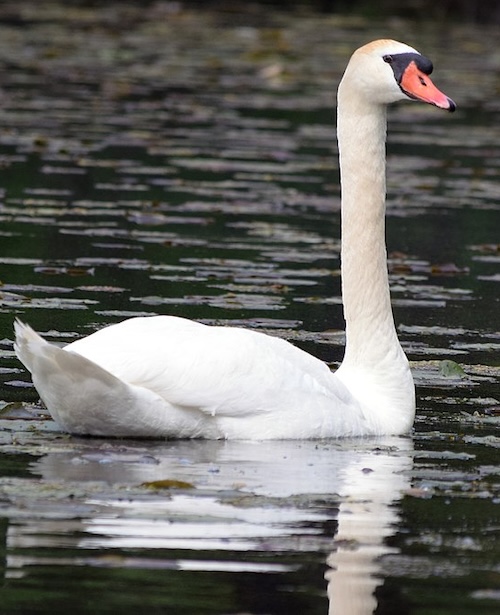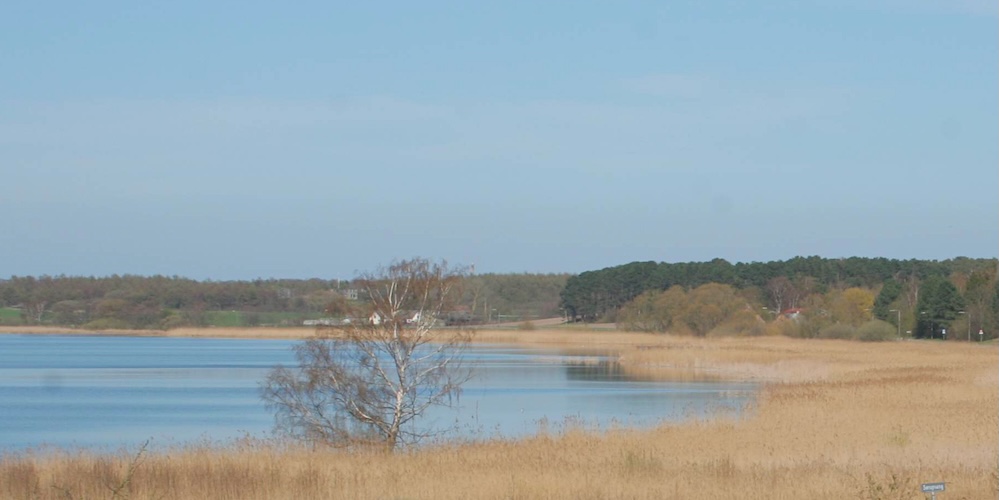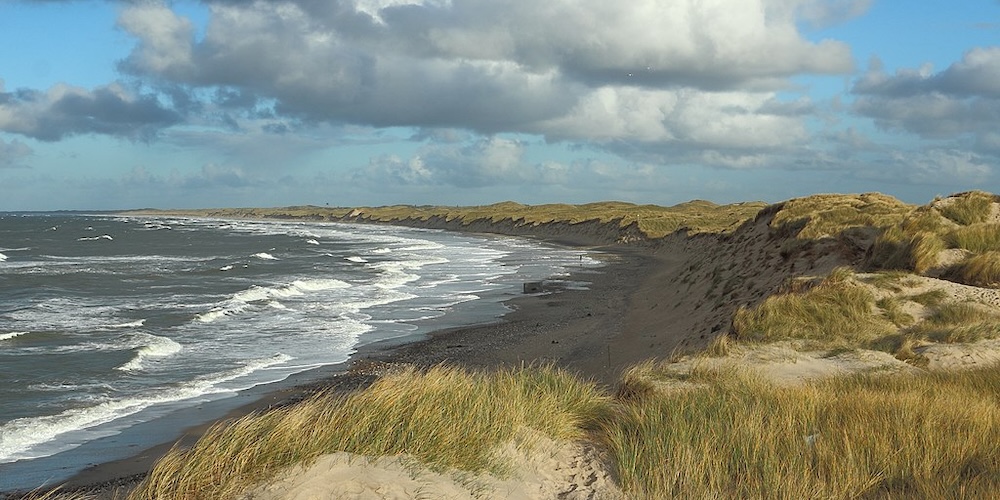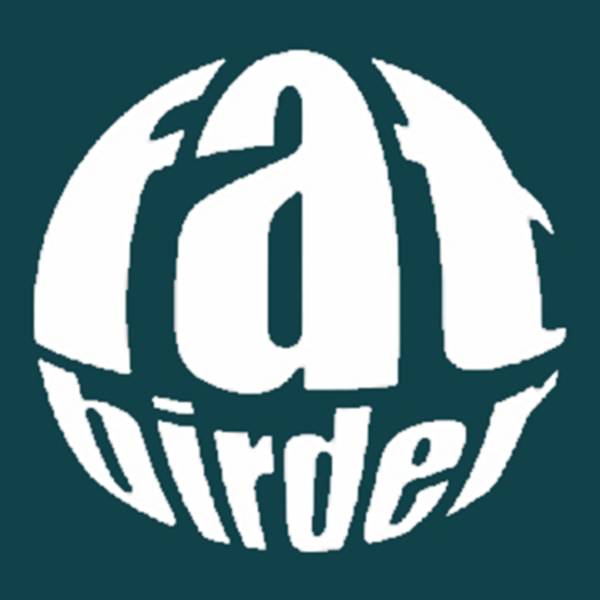Kingdom of Denmark

Denmark is a Nordic country in Northern Europe. It is the most populous constituent of the Kingdom of Denmark, a constitutionally unitary state that includes the autonomous territories of the Faroe Islands and Greenland in the north Atlantic Ocean. Metropolitan Denmark, or ‘Denmark proper’, consists of the northern Jutland peninsula and an archipelago of 406 islands. It is the southernmost of the Scandinavian countries, lying southwest of Sweden, south of Norway, and north of Germany, with which it shares a short border. Denmark proper is situated between the North Sea to the west and the Baltic Sea to the east. The Kingdom of Denmark, including the Faroe Islands and Greenland, has roughly 1,400 islands greater than 100 m2 (1,100 square feet) in area; 443 have been named and 78 are inhabited.
Denmark’s population is just over 6 million, of which roughly 40% live in Zealand, the largest and most populated island in Denmark proper; Copenhagen. The others being North Jutlandic Island, Funen, and Lolland. The capital and largest city of the Danish Realm, is situated on Zealand and Amager. The island of Bornholm is located some 150 km east of the rest of the country, in the Baltic Sea. Many of the larger islands are connected by bridges; a bridge-tunnel across the Øresund connects Zealand with Sweden; the Great Belt Fixed Link connects Funen with Zealand; and the Little Belt Bridge connects Jutland with Funen. Ferries or small aircraft connect to the smaller islands. The four cities with populations over 100,000 are the capital Copenhagen on Zealand; Aarhus and Aalborg in Jutland; and Odense on Funen.

Hasle Beach, Bornholm – ©Algkalv CC BY 3.0 via Wikimedia Commons
Composed mostly of flat, arable land, Denmark is characterised by sandy coasts, low elevation, and a temperate climate. The metropolitan part occupies a total area of 42,943.9 km2 (16,581 square miles). The area of inland water is 43 km2 (17 sq mi). The size of the land area cannot be stated exactly since the ocean constantly erodes and adds material to the coastline, and because of human land reclamation projects (to counter erosion). No location in Denmark is farther from the coast than 52 km (32 mi).
Denmark proper is flat with little elevation, having an average height above sea level of 31 metres (102 feet). The highest natural point is Møllehøj, at 170.86 metres (560.56 ft).[57] Although this is by far the lowest high point in the Nordic countries, Denmark’s general elevation in its interior is generally at a safe level from rising sea levels. A sizeable portion of Denmark’s terrain consists of rolling plains whilst the coastline is sandy, with large dunes in northern Jutland. Although once extensively forested, today Denmark largely consists of arable land. It is drained by a dozen or so rivers, and the most significant include the Gudenå, Odense, Skjern, Suså and Vidå – a river that flows along its southern border with Germany. The country has 1008 lakes, 16 have an area of more than 500 hectares (1,200 acres). Lake Arresø, located northwest of Copenhagen, is the largest lake.
Denmark has a temperate climate, characterised by cool to cold winters, with mean temperatures in January of 1.5 °C, and mild summers, with a mean temperature in August of 17.2 °C. Denmark has an average of 179 days per year with precipitation, on average receiving a total of 30 inches annually. Autumn is the wettest season and spring the driest. The position between a continent and an ocean means that the weather is often very changeable.

Lake Arresø – ©Kresten Hartvig Klit CC BY-SA 2.5 via Wikimedia Commons
Denmark belongs to the Boreal Kingdom and can be subdivided into two ecoregions: the Atlantic mixed forests and Baltic mixed forests. Almost all of Denmark’s primeval temperate forests have been destroyed or fragmented, chiefly for agricultural purposes during the last millennia. The deforestation has created large swaths of heathland and devastating sand drifts. In spite of this, there are several larger second growth woodlands in the country and, in total, almost 13% of the land is now forested. Norway spruce is the most widespread tree. Roe deer are found in growing numbers, and red deer can be found in the sparse woodlands of Jutland. Denmark is also home to smaller mammals, such as polecats, hares and hedgehogs. Of the more than 500 bird species recorded about 200 breed in the country. Large marine mammals include healthy populations of harbour porpoises, growing numbers of pinnipeds and occasional visits of whales, including blue whales and orcas. Cod, herring and plaice are abundant culinary fish in Danish waters and form the basis for a large fishing industry.
Birding Denmark
While Denmark is a relatively small country it has over 7,000 km of coastline with marshland, mudflats, inlets and coastal meadows. Furthermore, Denmark lies on the main migration routes between continental Europe and the rest of Scandinavia. In spring and autumn, a massive migration of landbirds – both raptors and passerines – takes place, while enormous numbers of wildfowl and waders stop off, some of them even spending winter here. Denmark actually hosts almost the whole population of Pale-bellied Brent Geese from Spitzbergen in the winter months. In summer we are home to a large population of breeding waterbirds and approximately 200 bird species breed regularly in Denmark.

Mols Bjerge National Park – ©Sebastian Nils CC BY 3.0 via Wikimedia Commons
There are some 13,000 members of Dansk Ornitologisk Forening (DOF – BirdLife Denmark), which is the only national organisation for birders in Denmark. Most people look at their feeders, of course, but also birding is pretty common at wetland sites and at visible migration watch-points. Twitching is a small, but fast-growing pastime.
There are about 100 ringers and only six Bird Observatories in Denmark with regular activities. Many people undertake some kind of monitoring or organisation work through DOF. There are 13 regional bird magazines in black and white – one for each local branch. DOF – BirdLife Denmark provides two national bird magazines, which are in colour.
The best birding sites in Denmark are along the Danish west coast. In the south you find the northern part of the Wattensea. 100,000 birds, primarily ducks, geese and shorebirds, are visible in the area throughout the year. Further north along the coastline there are several wetlands, which all act as magnets to waterfowl. The entire coast is good for migrating seabirds, especially in the strong westerly winds. At the westernmost point lies Blaavand Bird Observatory, where there is ringing of migrant birds in spring and autumn. In the northernmost part of Jutland is Skagen. Skagen acts as a bottleneck and is probably Northern Europe’s best spring migration point for birds of prey. Migration here starts in April and ends in mid-June. Skagen Bird Observatory provides daily updates and counts of migrating birds in Skagen. Another good spring migration site for birds is Gilbierg in North Zealand. Ten thousand Cranes pass North Zealand each year – especially if the wind is in the right direction. South of Copenhagen is the coast called Stevns. This is the site for birds of prey during autumn. When birds of prey leave Falsterbo in Sweden, Danes are ready to see them when they come off the sea.

Thy National Park – ©Slaunger CC BY-SA 3.0 via Wikimedia Commons
The capital, Copenhagen, holds most birdwatchers and visitors to Copenhagen should visit West Amager, which is the best birding place near the capital. The Southernmost point is Gedser. Birds of prey coming in from Sweden and first seen at Stevns, can sometimes be relocated on their further migration either by Gedser, Hyllekrog or Stignæs before leaving Zealand. As in Skagen and Blaavand birds are ringed at Gedser Bird Observatory. Towards the east is the island of Bornholm. Northeast of Bornholm are Christiansø that for many years was regarded as the Danish equivalent to Fair Isle.
Politically the Faroe Isles are part of Denmark, but biologically they are not – Danish birders do not ‘count’ Faroes birds on their Danish lists.
-
Birding sites in Denmark
InformationOn this page you will find a number of links to birding sites in Denmark, region by region. The links can be found in the box to the right. The link "Birding sites in Denmark" leads to a Google map showing the whole of Denmark with all the sites marked.
-
Number of bird species: 518
(As at April 2025)National Bird: Mute Swan Cygnus olor
-
Avibase
PDF ChecklistThis checklist includes all bird species found in Denmark , based on the best information available at this time. It is based on a wide variety of sources that I collated over many years. I am pleased to offer these checklists as a service to birdwatchers. If you find any error, please do not hesitate to report them. -
E-Bird
PDF ChecklistThis checklist is generated with data from eBird (ebird.org), a global database of bird sightings from birders like you. If you enjoy this checklist, please consider contributing your sightings to eBird. It is 100% free to take part, and your observations will help support birders, researchers, and conservationists worldwide. -
Wikipedia
Annotated ListThis is a list of the bird species recorded in Denmark. The avifauna of Denmark included a total of 504 species recorded in the wild by according to the Dansk Ornitologisk Forening (DOF; Danish Ornithological Society)
-
Birds of Europe, North Africa, and the Middle East
| Photographic Guide | By Frédéric Jiguet & Aurélien Audevard | PUP | 2017 | Paperback | 447 pages, 2200 colour photos, colour distribution maps | ISBN: 9780691172439 Buy this book from NHBS.com -
Collins Bird Guide
| By Lars Svensson | Harper Collins | Edition 3 | 2023 | Paperback | 478 pages, 4000+ colour illustrations, 700 colour distribution maps | ISBN: 9780008547462 Buy this book from NHBS.com

Collins Bird Guide
AndroidThe Collins Bird Guide App provides everything you need to identify a species quickly and learn about it thoroughly.
Collins Bird Guide
Apple iOS |Collins Bird Guide 4+ A field guide to Europe NatureGuides Ltd. Designed for iPadFestivals & Bird Fairs-
Skagen Fuglefestival
Facebook PageSkagen Fuglefestival takes place every year in Skagen the 2nd weekend in May - Skagen Bird Festival is arranged by: Skagen Bird's Nest Friends in collaboration with: Danish Ornithological Society, Skagen Bird's Nest and DOF-Jutland
Observatories-
Blåvand Bird Observatory
Observatory WebsiteSatellite ViewBlaavand Bird Observatory is located in the eastern part of the North Sea, situated at the westernmost tip of Denmark. The observatory was started by the Danish Ornithological Society in 1963 and is still run by volunteers of the society. In 1963 a standard observation programme was introduced which is still setting the guidelines for observations resulting in one of the longest standardised observation series in Europe. It is the oldest and best-equipped bird observatory in Denmark. -
Christiansø Bird Observatory
Observatory WebsiteSatellite ViewChristiansø is the easternmost point in Denmark. Islands and shores, large seabird colonies, volumes of migratory birds, rare toads and plants. Ertholmene is the only Danish archipelago, and as such and in itself is a unique natural habitat. The Ertholmene is also covered by a wide range of protections, and is, for example, designated as the EU Habitat, EU Bird Protection Area and Nature Reserve. -
Gedser Bird Observatory
Observatory WebsiteSatellite ViewYou are wellcome to visit the Bird Observatory and to parcicipate in excursions published on the right side of our homepage https://www.gedserfuglestation.dk/. The discriptions are in Danish as most of the participants. But most Danes do understand English and speak it quite well. -
Ringing Center National Museum of Natural History
Observatory WebsiteSatellite ViewThe Bird Ringing Data Collection of the Zoological Museum, known as the Copenhagen Bird Ringing Centre, comprises data from Denmark as well as the Faroe Islands and Greenland. The Collection consists of ringing data for altogether c. 2.5 million birds as well as information on c. 150,000 recoveries. The annual number of ringed birds varies between 100,000 and 120,000. While the ringing data are still manu- ally recorded, the main part of the recoveries are stored in a computer database. Government Site. -
Skagen Bird Observatory
Observatory WebsiteSatellite ViewMigratory routes over Denmark are generally spread over a wide front, but in certain cases migration is concentrated, due to special geographical conditions. This is the case at Skagen (also known as the Skaw) as Jutland has the form of a giant funnel with Skagen at the end. Bird news daily.
Museums & Universities-
Copenhagen University Zoological Museum
WebsiteThe main collection comprises study skins, altogether c. 110,000 specimens of c. 7,000 species. This collection is arranged in systematic order and with a geographical subdivision within individual species. Half of this collection is from Denmark and the North Atlantic Dependencies, obtained mainly by Finn Salomonsen. There are modest collections from Scandinavia and relatively little from other parts of Europe. Important sections comprise the private collection of Lehn Schiøler of c. 30,000 Nordic waterfowl, collected mainly for detailed studies of of seasonal and age-related plumage variations. Large series also exist of shorebirds. The series of gyrfalcons Falco rusticolus comprises c. 800 specimens, representing c. half of all material kept in museums. An historically important collection is c. 100 mounts from the beginning of the 19th Century (Peter C. Wöldike).
Organisations-
Bird Ringing Central
WebsiteThe place to report sightings, enquire about observed rings etc. -
DOF - Bornholm
WebsiteThe branch covers the islands of Bornholm and Ertholmene. Two IBA -
DOF - Fyn
WebsiteThe branch covers Funen. Seven IBA’s are located here with Arreskov Sø, Firtalsstrand and Langeland being the best places to birdwatch… -
DOF - København
WebsiteThe branch covers the capital. Nine IBA’s are located here with Vestamager, Ølsemagle Revle and Stevns being the main birding places… -
DOF - Nordjylland
WebsiteThe branch covers northern Jutland. Nine IBA’s are located here with Skagen, Lille Vildmose and Ulvedybet being the best places to birdwatch… -
DOF - Nordsjælland
WebsiteThe branch covers Northern Zealand. Six IBA’s are located here with Vaserne and the north coast being the main birding locations… -
DOF - Nordvestjylland
WebsiteThe branch covers North Western Jutland. Seven IBA’s are located here with Vejlerne and Agger Tange being the best places to bird… -
DOF - Pandion
Website -
DOF - Storstrøm
WebsiteThe branch covers the southern islands Falster, Lolland and Møn. 13 IBA’s are located here with Møn, Gedser and Maribo lakes being the best places to birdwatch… -
DOF - Sydvestjylland
WebsiteThe branch covers South Western Jutland. Nine IBA’s are located here with Blaavand, Mandø, Skallingen and Filsø being the best places to birdwatch… -
DOF - Sydøstjylland
WebsiteThe local department DOF Southeast Jutland arranges toursand conducts meetings as well as lectures for the members of the association. We are also active in the local work with bird protection. -
DOF - Vestjylland
Facebook PageThe branch covers Western Jutland. 14 IBA’s are located here with Tipperne, Skjern Enge and Stadil Fjord being the best places to bird… -
DOF - Vestsjælland
WebsiteThe branch covers Western Zealand. Five IBA’s are located here with Tissø, Tyrstrup Bavelse lakes and Korshage being the best places to birdwatch… -
DOF - Østjylland
WebsiteDansk Ornitologisk Forening, Lokalafdeling for Østjylland - The branch covers Eastern Jutland. 16 IBA’s are located here with Norsminde Fjord, Egå Engsø and Årslev Engsø being the best places to bird… -
DOFbasen - Observation Database
WebsiteThe local branches of DOF do the administrative work on the database. The people involved in this work are organized in a group called "DOFbasegruppen" and its activities are coordinated by DOF. -
Danmarks Naturfredningsforening (Danish Society for Nature Conservation)
WebsiteThe Danish Society for Nature Conservation is the largest nature conservation and environmental organisation in Denmark. It is a membership organisation that works to conserve nature and the environment in Denmark through local work, conservation, lobbying and specific projects. We are committed to conserve and protect the natural environment in Denmark in order to secure a future, where natural forests and meadows rich in biological diversity still exists and clean drinking water is still obtainable. -
Dansk Ornitologisk Forening - BirdLife Denmark
WebsiteFounded in 1906, DOF is one of the oldest nature conservation organizations in Denmark with a 110-year history of bird research and protection. Bird watching, lectures and a common scientific interest in birds has always been the focal point of the organization – and it still is. However, the support base has broadened and today DOF embraces all bird and nature enthusiasts sharing DOF's concern about the degeneration of nature and decline in bird populations. -
Dansk Ornitologisk Forening Shop
WebsiteThe DOF virtual shop with books, binoculars and all things birdie... profit for conservation -
Fuglevaernsfonden
WebsiteFor birds, for people, for the future - Fuglevaernsfonden runs 20 bird reserves in Denmark. They all have outstanding nature and most of them are open to visitors…
Reserves-
* Protected areas of Denmark
InformationSatellite ViewInteractive links to national parks and reserves by municipalities -
Denmark's IBAs
InformationSatellite View -
NP Mols Bjerge
InformationSatellite ViewThe protected area, measures 180 square kilometres (69 sq mi) in size. The Mols Hills, reaching a height of 137 metres (449 ft), are centrally located in the park, and take up 2,500 ha. "More than half of all wild Danish plant species" can be found at Mols Bjerge. There are rich and varied populations of birds in the park area, ranging from sea birds, waders, forest birds, cavity nesting birds to birds of prey at the top of the food chain. -
NP Skjoldungernes Land
WebsiteSatellite ViewSkjoldungernes Land was created to preserve the rich natural areas that border Roskilde Fjord. The park's many islands and promontories are also a vital breeding and feeding grounds for a diverse range of birds including the rare white-tailed eagle. -
NP Thy
InformationSatellite ViewThe landscape comprise windy coasts and dune systems, either bare, covered by heaths, meadows or plantations, with a great number of conifers. Low-nutrient wet hollows (a kind of bog) also occur, and between this varied coastal landscape, small ponds and lakes can be found. Parts of the park have been designated as a bird protection and international Ramsar area, as well as Natura 2000 and various other protections. -
NP Wadden Sea
InformationSatellite ViewThe Wadden Sea is internationally known as a resting place for millions of migratory birds, and more than 10 million of them pass through the Wadden Sea twice a year.
Sightings, News & Forums-
Netfugl
News & SightingsNetfugl.dk is produced in cooperation with the Danish Ornithological Society -
eBird
SightingseBirding This Month
Guides & Tour Operators-
BirderGuide
GuideI am Søren Brinch - one of Denmark's highly experienced bird guides and high ranking birders. I love nature, and would be honored to show you the birds in their natural surroundings in Denmark's most beautiful scenery. I bring you directly to the birds you want to see, because I know where they are. I am an expert on Danish National Parks. -
Danish Ornithological Society tours and activity
GuidingLists of day trips and outings organised by DOF -
Vadehavs Centre
Local Tour OperatorADEHAVSCENTRET is located right by the Wadden Sea, which is Denmark's largest, flattest and wettest National Park. -
WhyNotBirds
Local Tour OperatorJoin us and go birding in Copenhagen!
Trip Reports-
2013 [08 August] - Frank van Groen
PDF ReportI made this trip with my wife Inka and children Roos and Jan. We stayed one week in an house in Fanø, the northernmost island of the Danish Waddensea and one week in a house in southern Norway in Åpta at the northern end of Åpta-fjorden. We took the ferry from Hirtshals in northern Denmark to Kristiansand in southern Norway. On the way to Denmark we camped near Lüneburger Heide at Soltau-Harber, south of Hamburg. On the way back we camped near Hirtshals, on the Danish Waddensea island Rømø and again at Soltau-Harber. The weather was fine most of the time, except for some rainy moments in southern Norway -
2024 [05 May] - Frank Desting
PDF ReportIn Danish
Other Links-
Danish Bird List
WebsiteThe database containing records of all Danish rarities will continually be updated -
Fugle og Natur (Birds & Nature)
Facebook PageForum, Blog, Gallery etc… -
Netfugl.dk
WebsiteThis is probably is one of the best overall danish sites. It has internet updates on Beaman and Madges birds of europe, which also would be of interest to Norwegians and Swedes - It says of itself: Birding in Denmark with a complete list of the birds of Denmark including records of all rarities, photos and news about the latest rarities, Danish birders ranking and observations from Zealand -
Stig Linander's Danish Birding Spots
WebsiteMany net birders have put descriptions of birding spots on the net as an aid to other birders asking the everlasting question: Where to go birding? On this page you will find links to descriptions of Danish birding spots. You will also find descriptions of a few spots outside Denmark. These spots have given me unique birding experiences…
Blogs-
Kent Olsen - BirdsDK
BLOGBirding, mammaling, insecting and everything-elsing -
Rasmus Due Nielsen & Stephan Skaarup Lund - Aarhusbirderne
BLOGPhotoblog last updated November 2016 -
Rune Sø Neergaard - Birding NJ (Northern Jutland)
BLOGI am a birder living in Aalborg - the unofficial capital of the best region for birding in Denmark - Northern Jutland!
Photographers & Artists-
Gallery
GalleryMore than 57.000 birdimages from all over the world -
Photographer - Steffen Ortmann - Birds of Denmark
GalleryA Scandinavian bird site… mostly galleries of some terrific photos. -
Photographer - Tobias Hjorth
WebsiteTobias Hjorth's hobby and general interest for photographing birds and other wildlife evolved immediately after he purchased his first telephoto lens. Great reviews too. Today Tobias lives in the Denmark enjoying his passion and the great outdoors…
Fatbirder - linking birders worldwide...
Skip to content
